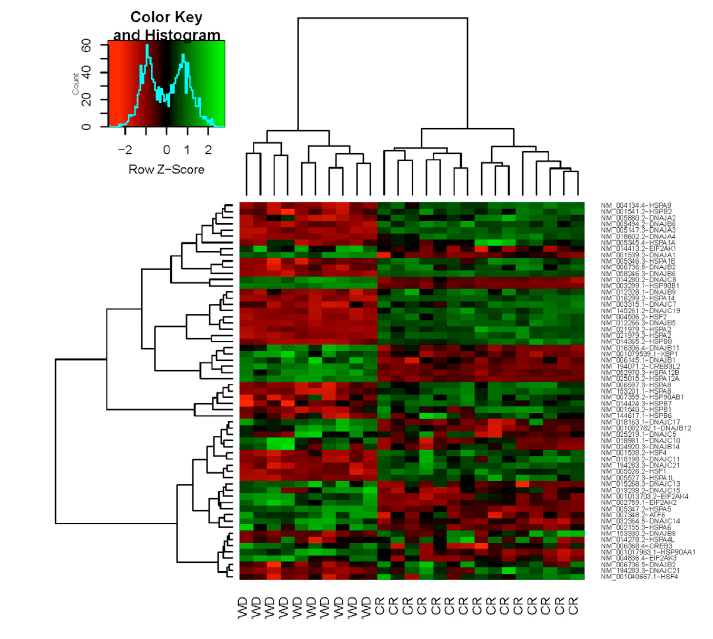The idea of calorie restriction for health benefits has been around for decades. In a previous post we talked about caloric restriction and longevity… summarizing that it may be beneficial for increasing life span, but we aren’t 100% sure on how effective it is.
There is also some evidence that caloric restriction has benefits for muscle tissue and there has been a lot of hype regarding the benefits of calorie restriction.
Recently, some scientists got a hold of people who were engaging in caloric restriction for almost a decade and compared their muscles to some regular, sedentary, people who eat your typical American diet.
Dig in and find out what we can really conclude from their findings… hint: not is all what it seems.
Long-Term Calorie Restriction Enhances Cellular Quality-Control Processes in Human Skeletal Muscle
Subjects
This study consisted of three groups of individuals with 37 participants per group for a grand total of 111 people. The three groups were as follows
Caloric Restriction (CR)
The caloric restriction group was recruited from the Caloric Restriction Society… no joke, that is a real thing.
These participants restricted their daily caloric intake by 30% for between 3 and 15 years.
Endurance Exercise (EX)
The second group (EX group) consisted of endurance runners who had been running an average of 48 miles/week
The EX group was matched on age, sex, and percent body fat with the CR group.
Western Diet Controls (WD)
This group consisted of sedentary (regular exercise < 1 hr/week) subjects who were eating a standard western diet.
They were matched on age and sex with the CR and EX groups. The characteristics of the study participants are shown in Table 1.
Importantly, none of the participants had evidence of chronic disease, or smoked
Also all the participants reported weight stability, defined as less than a 2-kg change in body weight in the preceding 6 months.
Food Record
Participants recorded all food and beverage intake for 7 consecutive days using the NDS-R program
Body Composition
Body composition of each individual was measured by DEXA
Muscle Biopsies and Gene Expression
Muscle biopsies were taken from the vastus lateralis muscle of 15 people from the CR group and 10 age-matched WD controls.
Gene expression was assessed using microarray technology.
Protein Expression
Put simply, protein expression was assessed using Immunoblots (a method that uses antibodies to quantify protein expression)
The Results
Diet
Those individuals in the CR group consumed a diet that restricted roughly 30% of “needed” calories. Their diets were also nutrient dense, providing more than 100% of the RDA values for micronutrients.
The energy intake in the CR groups was (1,779 ± 355 kcal/day; range 1,112–2,260 kcal/day) which was 27% and 37% lower than in the WD group (2,433 ± 502 kcal/day; range 1,756–3,537 kcal/day) and EX group (2,811 ± 711 kcal/day; range 1,935–4,459 kcal/day), respectively
Importantly, their diets also avoided all processed foods, rich in refined carbohydrates, free sugars, and partially hydrogenated oils.
The dietary breakdown of the three groups was as follows:
CR: 21% Protein, 50% Carbohydrate, 29% Fat, and 0.1% alcohol
EX: 17% Protein, 49% Carbohydrate, 32% Fat and 2% alcohol
WD: 16% Protein, 46% Carbohydrate, 34% Fat and 4% alcohol
Participant Characteristics
The full data is present in table 1 in the paper (snap shot below). Briefly, the CR group weighed less, was leaner, and had less lean mass than the EX and WD group (with the exception of BF being similar between CR and EX).

Serum Cortisol Levels
Interestingly, serum cortisol levels were increased in the CR restriction group but not the EX or the WD group.
The serum cortisol was inversely associated with the inflammatory mediated TNF-alpha in the CR group. Oddly, the authors present no data of correlation between CR and TNF-alpha in the other groups, which I find strange.
This is a point we will return to in the discussion.
Effect of Caloric Restriction on Muscle Tissue
Because heat maps are cool I am posting the figure from the paper (See below). Essentially, they were able to show that the CR group had a much different gene expression profile in their skeletal muscles than those consuming a WD.
The genes that were different were for heat shock proteins and other protein folding transcripts. These proteins are known to help “repair” damaged proteins and protect against cellular stresses.

In addition to the heat shock proteins they also found that both the genes and proteins involved in autophagy (essentially cellular self-eating and also a “house cleaning program”) were also increased in the CR group compared to the WD diet group.
Discussion
This study was an in-depth molecular analysis of how caloric restriction effects serum cortisol and muscle tissue, specifically cell stress response and autophagy. Based on the data presented, it appears that caloric restriction can increase the stress response hormone cortisol as well as chaperone and autophagy proteins.
It seems that caloric restriction can improve your muscles ability to regulate the quality of proteins in the muscle cells and improve their “house cleaning” abilities.
Now there are some important things to note about this study and to take into context.
Cortisol is often thought of in a negative light in the blogosphere. Cortisol is actually an anti-inflammatory molecule, which can convey health benefits and this study sheds some light on the often misleading idea that elevated cortisol is an evil thing.
Cortisol is like the Force.. it has a light side and it has a dark side, context is really key.
Now with direct application to the study at hand. The authors present data showing that higher serum cortisol correlates with lower markers of inflammation…but only in the CR group. It is just as plausible that higher cortisol levels correlate with higher markers of inflammation in the WD group (they show no data on the cortisol and inflammation in the WD group).
Thus, it is hard to really make a rock solid case for increasing cortisol, yet it appears that in the context of caloric restriction it may, and I stress, may have some benefit.
Onto the effect of caloric restriction on muscle tissue. The study indeed shows that caloric restriction appears to be more beneficial than a “crappy” WD for muscle tissue.
That I can’t (and won’t) argue with. I think their data in that aspect is sound and provides some evidence that caloric restriction can enhance muscle cell quality.
What is not shown is a comparison of exercise vs caloric restriction. It is entirely plausible, and there is data to suggest it that exercise can convey similar, if not more robust improvements in the cell protein repair and housecleaning mechanisms when compared to caloric restriction (1,2,3,4).
In other words, caloric restriction can, but is not required, to induce these positive changes.
Now begs the question… will caloric restriction coupled with exercise yield greater benefits? Well, often times it can be hard to train at a high level and consume reduced amounts of calories so the practical application may look something like periods of caloric restriction or fasting but that question remains unanswered.
The Wrap Up
Caloric restriction may improve the quality of proteins and house cleaning mechanisms in muscle tissue. However, it is not likely a requirement for these features and exercise may also provide similar results. Currently, we do not know how combining periods of caloric restriction with exercise work together in providing benefits to muscle tissue.

